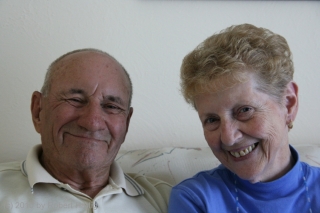Someone has finally done it. Elkhart County native Jenni Siri has set about developing a website dedicated to the 20th century’s second worst tornado outbreak, the infamous 1965 Palm Sunday Outbreak. Like me, Jenni has been shaped by the outbreak in a way that has remained with her. In her website, she has provided a forum for survivors of that day to share their experiences.
A few days ago, in an email exchange, I shared my thoughts with Jenni concerning a peculiar controversy which arose out of the Palm Sunday event. It concerns what is probably the most celebrated tornado photograph of all time: Elkhart Truth photographer Paul Huffman’s award-winning photo of twin funnels sweeping across US 33 between Goshen and Elkhart, Indiana.
In his newspaper account, Huffman described the tornado approaching and demolishing the Midway Trailer Court. Yet others have insisted that they saw “The Twins,” as they have been called, strike the Sunnyside Division in Dunlap, nearly 3 miles up the road.
Who is right? After nearly 50 years, the issue still persists. Can it ever be settled?
I believe both sides of The Twins controversy have told the truth about what they saw, and I have a very good reason for thinking so. When I shared my thoughts with Jenni, she asked whether I’d be willing to post them on her site. I had planned to save my theory for my book on the Palm Sunday Tornadoes, but that book is taking a long time to write. Meanwhile, why not try to resolve a conflict which, to my thinking, was never necessary. There’s an explanation that makes truth-tellers out of everyone, liars out of no one, and strikes me as just plain common sense.
But you can’t read it here. Believe me, once I finished my writeup, I was sorely tempted to post it in this blog! But a promise is a promise after all. So instead, I invite you to check out my article, “The Truth about ‘The Twins,'” on Jenni’s excellent site.


